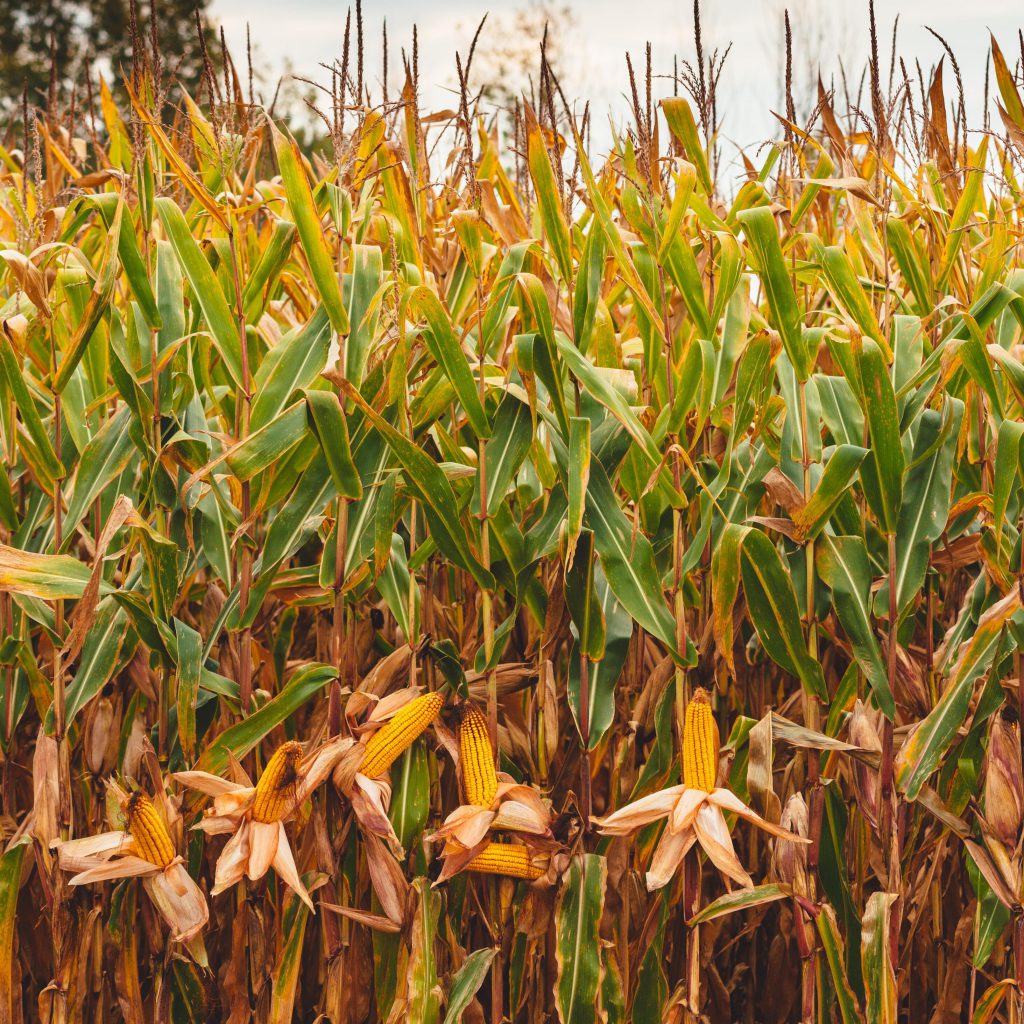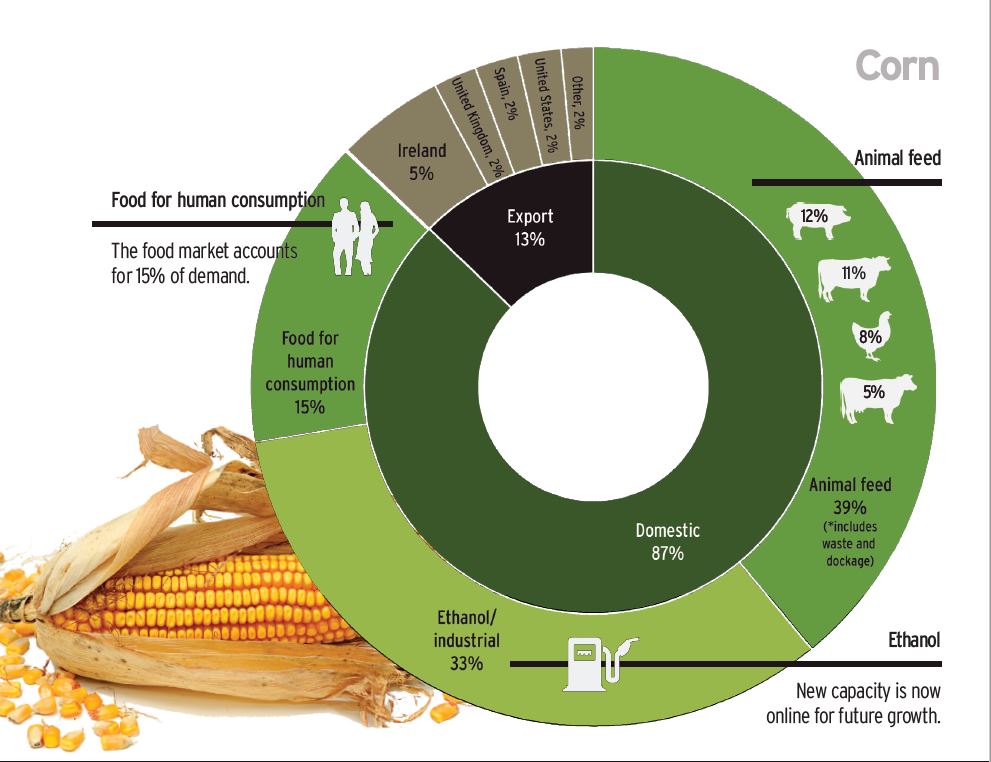The Whole Grains Story: Corn #WhereDoGrainsGo

Did you know Ontario is the leading corn producing province in the country – growing on average, 62% of Canada’s grain corn? Grain corn is the second largest crop in terms of acreage in Ontario, but it is the largest volume crop – farmers produce on average, 8.7 million metric tonnes a year on 2.1 million acres. For anyone that has drove past farmers fields- you might have noticed this – there is A LOT of corn in the province!
Did you know? One acre of grain is roughly the same size as 2.5 hockey rinks.
In terms of global corn production, Canada is a minor player: producing only 1% of the global corn supply. Most of the corn grown globally is driven by the United States, China, and South America.

Ontario use
87% of Ontario produced corn is used right here in Ontario! Most of Ontario’s domestic grain corn is used in swine, beef, poultry, and dairy feed. Interestingly, after corn has been processed into food, ethanol, whisky etc., the byproducts or leftover pieces of corn are actually sold as animal feed as well. These are called dried distillers grains, and a great way to reduce food waste from the processing side of the industry. Ethanol production and other industrial applications, including industrial alcohols and oils is also a large use for domestic corn.

Food for human consumption is also an important market for domestic corn. Grain corn can be found in many foods such as corn chips, tortillas, whiskey, yogurt, bread, and more!
Make this great Cornmeal Turkey Tamale Pie for dinner using corn meal made from grain corn.
Get the recipeFood for human consumption is also an important market for domestic corn. Grain corn can be found in many foods such as corn chips, tortillas, whiskey, yogurt, bread, and more!
Exports
Ontario corn is exported to markets in the United States, Spain, the Republic of Ireland, and the United Kingdom, and exports have been increasing over the past three years. Export markets provide an increasingly large opportunity as production and yields are continually improving in Ontario.
